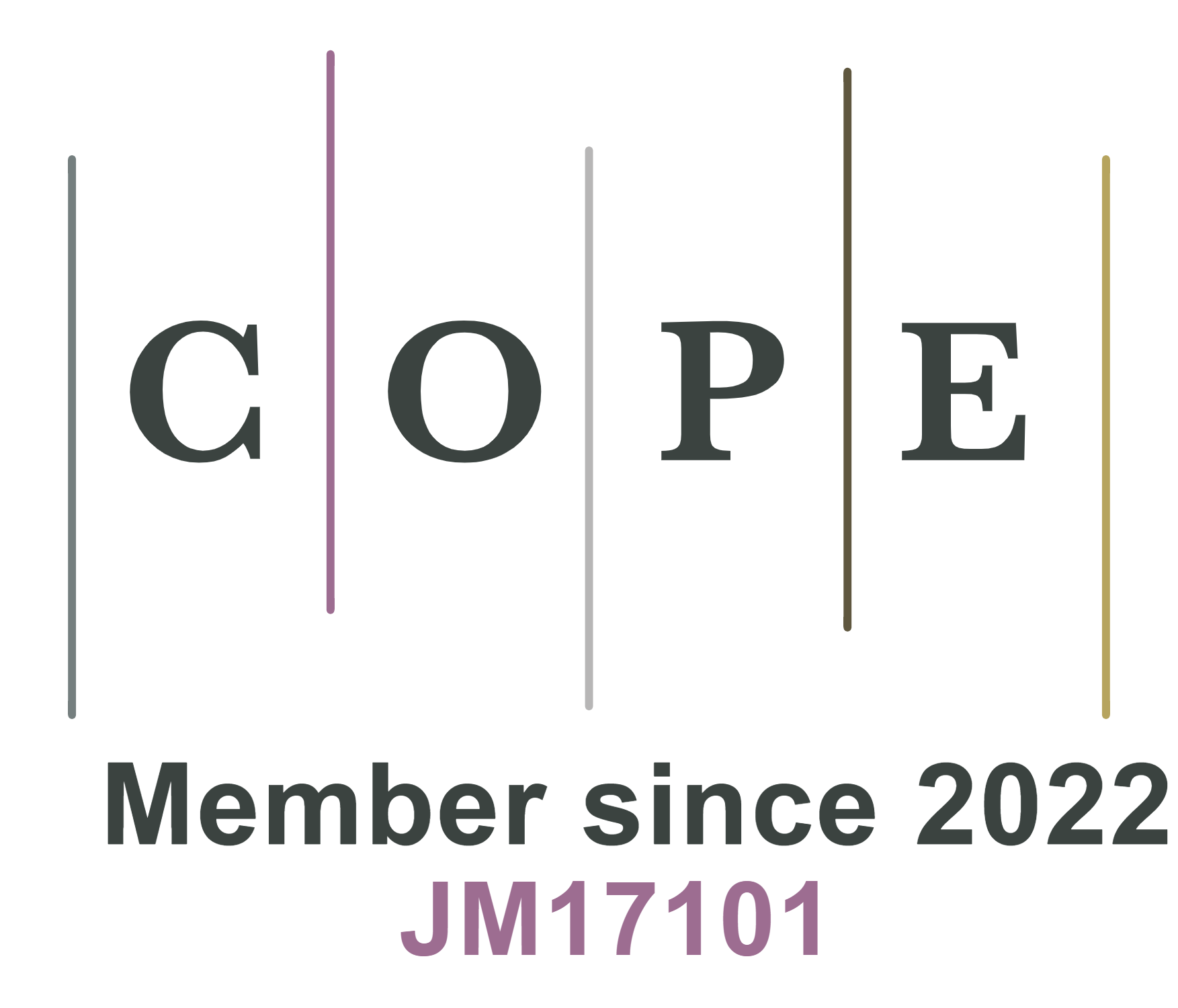REFERENCES
1. Höök M, Tang X. Depletion of fossil fuels and anthropogenic climate change - a review. Energy Policy 2013;52:797-809.
2. Abdalla AM, Hossain S, Azad AT, et al. Nanomaterials for solid oxide fuel cells: a review. Renew Sustain Energy Rev 2018;82:353-68.
3. Suntivich J, Gasteiger HA, Yabuuchi N, Nakanishi H, Goodenough JB, Shao-horn Y. Design principles for oxygen-reduction activity on perovskite oxide catalysts for fuel cells and metal-air batteries. Nat Chem 2011;3:546-50.
5. Jiang S, Zhou W, Niu Y, Zhu Z, Shao Z. Phase transition of a cobalt-free perovskite as a high-performance cathode for intermediate-temperature solid oxide fuel cells. ChemSusChem 2012;5:2023-31.
6. Holtappels P, Stimming U. Solid oxide fuel cells (SOFC). In: Vielstich W, Lamm A, Gasteiger HA, Yokokawa H, editors. Handbook of fuel cells. Hoboken: Wiley; 2010.
7. Fan L. Solid-state electrolytes for SOFC. In: Zhu B, Raza R, Fan L, Sun C, editors. Solid oxide fuel cells. Hoboken: Wiley; 2020. pp. 35-78.
8. Lacerda M, Irvine JTS, Glasser FP, West AR. High oxide ion conductivity in Ca12Al14O33. Nature 1988;332:525-6.
9. Nakayama S, Kageyama T, Aono H, Sadaoka Y. Ionic conductivity of lanthanoid silicates, Ln10(SiO4)6O3 (Ln = La, Nd, Sm, Gd, Dy, Y, Ho, Er and Yb). J Mater Chem 1995;5:1801-5.
10. Lacorre P, Goutenoire F, Bohnke O, Retoux R, Laligant Y. Designing fast oxide-ion conductors based on La2Mo2O9. Nature 2000;404:856-8.
11. Haugsrud R, Norby T. Proton conduction in rare-earth ortho-niobates and ortho-tantalates. Nat Mater 2006;5:193-6.
12. Li M, Pietrowski MJ, De Souza RA, et al. A family of oxide ion conductors based on the ferroelectric perovskite Na0.5Bi0.5TiO3. Nat Mater 2014;13:31-5.
13. Singh P, Goodenough JB. Monoclinic Sr1-xNaxSiO3-0.5x: new superior oxide ion electrolytes. J Am Chem Soc 2013;135:10149-54.
14. Fan L, Zhu B, Su P, He C. Nanomaterials and technologies for low temperature solid oxide fuel cells: recent advances, challenges and opportunities. Nano Energy 2018;45:148-76.
15. Zhu B, Albinsson I, Andersson C, Borsand K, Nilsson M, Mellander B. Electrolysis studies based on ceria-based composites. Electrochem Commun 2006;8:495-8.
16. Fan L, Zhang G, Chen M, Wang C, Di J, Zhu B. Proton and oxygen ionic conductivity of doped ceria- carbonate composite by modified Wagner polarization. Int J Electrochem Sci 2012;7:8420-35.
17. Zhu B, Raza R, Qin H, Liu Q, Fan L. Fuel cells based on electrolyte and non-electrolyte separators. Energy Environ Sci 2011;4:2986-92.
18. Zhu B, Raza R, Abbas G, Singh M. An electrolyte-free fuel cell constructed from one homogenous layer with mixed conductivity. Adv Funct Mater 2011;21:2465-9.
19. Garcia-barriocanal J, Rivera-calzada A, Varela M, et al. Colossal ionic conductivity at interfaces of epitaxial ZrO2:Y2O3/SrTiO3 heterostructures. Science 2008;321:676-80.
20. Singh K, Nowotny J, Thangadurai V. Amphoteric oxide semiconductors for energy conversion devices: a tutorial review. Chem Soc Rev 2013;42:1961-72.
21. Götsch T, Bertel E, Menzel A, Stöger-pollach M, Penner S. Spectroscopic investigation of the electronic structure of yttria-stabilized zirconia. Phys Rev Mater 2018;2:035801.
22. Asghar MI, Jouttijärvi S, Jokiranta R, Valtavirta A, Lund PD. Wide bandgap oxides for low-temperature single-layered nanocomposite fuel cell. Nano Energy 2018;53:391-7.
23. Adler SB. Factors governing oxygen reduction in solid oxide fuel cell cathodes. Chem Rev 2004;104:4791-843.
24. Sunarso J, Hashim SS, Zhu N, Zhou W. Perovskite oxides applications in high temperature oxygen separation, solid oxide fuel cell and membrane reactor: a review. Prog Energy Combust Sci 2017;61:57-77.
25. Liu D, Kelly TL. Perovskite solar cells with a planar heterojunction structure prepared using room-temperature solution processing techniques. Nat Photon 2014;8:133-8.
26. Oikawa T, Ohdaira K, Higashimine K, Matsumura H. Application of crystalline silicon surface oxidation to silicon heterojunction solar cells. Curr Appl Phys 2015;15:1168-72.
27. Wu S, Li L, Wang W, et al. Study on the front contact mechanism of screen-printed multi-crystalline silicon solar cells. Sol Energy Mater Sol Cells 2015;141:80-6.
28. Zhu B, Huang Y, Fan L, et al. Novel fuel cell with nanocomposite functional layer designed by perovskite solar cell principle. Nano Energy 2016;19:156-64.
29. Zhu B, Lund P, Raza R, et al. A new energy conversion technology based on nano-redox and nano-device processes. Nano Energy 2013;2:1179-85.
30. Xia C, Mi Y, Wang B, Lin B, Chen G, Zhu B. Shaping triple-conducting semiconductor BaCo0.4Fe0.4Zr0.1Y0.1O3-δ into an electrolyte for low-temperature solid oxide fuel cells. Nat Commun 2019;10:1707.
31. Zhu B, Wang B, Wang Y, et al. Charge separation and transport in La0.6Sr0.4Co0.2Fe0.8O3-δ and ion-doping ceria heterostructure material for new generation fuel cell. Nano Energy 2017;37:195-202.
32. Zhang Y, Liu J, Singh M, et al. Superionic conductivity in ceria-based heterostructure composites for low-temperature solid oxide fuel cells. Nanomicro Lett 2020;12:178.
33. Takahashi T, Esaka T, Iwahara H. Conduction in Bi2O3-based oxide ion conductor under low oxygen pressure. II. Determination of the partial electronic conductivity. J Appl Electrochem 1977;7:303-8.
34. Zhu B, Mi Y, Xia C, et al. A nanoscale perspective on solid oxide and semiconductor membrane fuel cells: materials and technology. Energy Mater 2021;1:100002.
35. Zakaria Z, Abu Hassan SH, Shaari N, Yahaya AZ, Boon Kar Y. A review on recent status and challenges of yttria stabilized zirconia modification to lowering the temperature of solid oxide fuel cells operation. Int J Energy Res 2020;44:631-50.
36. He L, Su Y, Lanhong J, Shi S. Recent advances of cerium oxide nanoparticles in synthesis, luminescence and biomedical studies: a review. J Rare Earths 2015;33:791-9.
37. Bhalla AS, Guo R, Roy R. The perovskite structure - a review of its role in ceramic science and technology. Mater Res Innov 2000;4:3-26.
38. Wang Z, Meng Y, Singh M, et al. Ni/NiO exsolved perovskite La0.2Sr0.7Ti0.9Ni0.1O3-δ for semiconductor-ionic fuel cells: roles of electrocatalytic activity and physical junctions. ACS Appl Mater Interfaces 2023;15:870-81.
39. Shao K, Li F, Zhang G, Zhang Q, Maliutina K, Fan L. Approaching durable single-layer fuel cells: promotion of electroactivity and charge separation via nanoalloy redox exsolution. ACS Appl Mater Interfaces 2019;11:27924-33.
40. Sunarso J, Baumann S, Serra J, et al. Mixed ionic-electronic conducting (MIEC) ceramic-based membranes for oxygen separation. J Membr Sci 2008;320:13-41.
41. Ali R, Yashima M. Space group and crystal structure of the perovskite CaTiO3 from 296 to 1720 K. J Solid State Chem 2005;178:2867-72.
42. Goodenough JB. Electronic and ionic transport properties and other physical aspects of perovskites. Rep Prog Phys 2004;67:1915.
43. Islam QA, Majee R, Bhattacharyya S. Bimetallic nanoparticle decorated perovskite oxide for state-of-the-art trifunctional electrocatalysis. J Mater Chem A 2019;7:19453-64.
44. Ishihara T. Low temperature solid oxide fuel cells using LaGaO3-based oxide electrolyte on metal support. J Jpn Petrol Inst 2015;58:71-8.
45. An H, Shin D, Choi SM, et al. BaCeO3-BaZrO3 solid solution (BCZY) as a high performance electrolyte of protonic ceramic fuel cells (PCFCs). J Korean Ceram Soc 2014;51:271-7.
46. Kim J, Sengodan S, Kwon G, et al. Triple-conducting layered perovskites as cathode materials for proton-conducting solid oxide fuel cells. ChemSusChem 2014;7:2811-5.
47. Shen F, Lu K. Comparison of different perovskite cathodes in solid oxide fuel cells. Fuel Cells 2018;18:457-65.
48. Fan L, Su P. Layer-structured LiNi0.8Co0.2O2: a new triple (H+/O2-/e-) conducting cathode for low temperature proton conducting solid oxide fuel cells. J Power Sources 2016;306:369-77.
49. Huang YH, Dass RI, Xing ZL, Goodenough JB. Double perovskites as anode materials for solid-oxide fuel cells. Science 2006;312:254-7.
50. Tao S, Irvine JT. A redox-stable efficient anode for solid-oxide fuel cells. Nat Mater 2003;2:320-3.
51. Dragan M, Enache S, Varlam M, Petrov K. Perovskite-based materials for energy applications. In: Tian H, editor. Perovskite materials, devices and integration. London: IntechOpen; 2020.
52. Yousaf M, Mushtaq N, Zhu B, et al. Electrochemical properties of Ni0.4Zn0.6Fe2O4 and the heterostructure composites (Ni-Zn ferrite-SDC) for low temperature solid oxide fuel cell (LT-SOFC). Electrochim Acta 2020;331:135349.
53. Pilania G, Kocevski V, Valdez JA, Kreller CR, Uberuaga BP. Prediction of structure and cation ordering in an ordered normal-inverse double spinel. Commun Mater 2020;1:84.
54. Lan R, Tao S. Novel proton conductors in the layered oxide material LixlAl0.5Co0.5O2. Adv Energy Mater 2014;4:1301683.
55. Sebastian L, Jayashree RS, Gopalakrishnan J. Probing the mobility of lithium in LISICON: Li+/H+ exchange studies in Li2ZnGeO4 and Li2+2xZn1-xGeO4. J Mater Chem 2003;13:1400-5.
56. Prabhakaran K, Beigh M, Lakra J, Gokhale N, Sharma S. Characteristics of 8 mol% yttria stabilized zirconia powder prepared by spray drying process. J Mater Process Technol 2007;189:178-81.
57. Esposito V, Gadea C, Hjelm J, et al. Fabrication of thin yttria-stabilized-zirconia dense electrolyte layers by inkjet printing for high performing solid oxide fuel cells. J Power Sources 2015;273:89-95.
58. Park J, Lee Y, Chang I, et al. Atomic layer deposition of yttria-stabilized zirconia thin films for enhanced reactivity and stability of solid oxide fuel cells. Energy 2016;116:170-6.
59. Lu Z, Zhou X, Fisher D, et al. Enhanced performance of an anode-supported YSZ thin electrolyte fuel cell with a laser-deposited Sm0.2Ce0.8O1.9 interlayer. Electrochem Commun 2010;12:179-82.
60. Lee J, Lee Y, Lee H, Heo Y, Lee J, Kim J. Effect of Li2O content and sintering temperature on the grain growth and electrical properties of Gd-doped CeO2 ceramics. Ceram Int 2016;42:11170-6.
61. Xu R, Wu Y, Wang X, Zhang J, Yang X, Zhu B. Enhanced ionic conductivity of yttria-stabilized ZrO2 with natural CuFe-oxide mineral heterogeneous composite for low temperature solid oxide fuel cells. Int J Hydrog Energy 2017;42:17495-503.
62. Liu W, Lin D, Sun J, Zhou G, Cui Y. Improved lithium ionic conductivity in composite polymer electrolytes with oxide-ion conducting nanowires. ACS Nano 2016;10:11407-13.
63. Han M, Tang X, Yin H, Peng S. Fabrication, microstructure and properties of a YSZ electrolyte for SOFCs. J Power Sources 2007;165:757-63.
64. Yamamoto O. Solid oxide fuel cells: fundamental aspects and prospects. Electrochim Acta 2000;45:2423-35.
65. Anirban S, Dutta A. Structural and ionic transport mechanism of rare earth doped cerium oxide nanomaterials: effect of ionic radius of dopant cations. Solid State Ion 2017;309:137-45.
66. Singh M, Singh AK. Studies on structural, morphological, and electrical properties of Ga3+ and Cu2+ co-doped ceria ceramics as solid electrolyte for IT-SOFCs. Int J Hydrog Energy 2020;45:24014-25.
67. Wang B, Zhu B, Yun S, et al. Fast ionic conduction in semiconductor CeO2-δ electrolyte fuel cells. NPG Asia Mater 2019;11:51.
68. Chen G, Liu H, He Y, et al. Electrochemical mechanisms of an advanced low-temperature fuel cell with a SrTiO3 electrolyte. J Mater Chem A 2019;7:9638-45.
69. Iwahara H, Esaka T, Uchida H, Maeda N. Proton conduction in sintered oxides and its application to steam electrolysis for hydrogen production. Solid State Ion 1981;3-4:359-63.
70. Tao S, Irvine J. A stable, easily sintered proton-conducting oxide electrolyte for moderate-temperature fuel cells and electrolyzers. Adv Mater 2006;18:1581-4.
71. Zuo C, Zha S, Liu M, Hatano M, Uchiyama M. Ba(Zr0.1Ce0.7Y0.2)O3-δ as an electrolyte for low-temperature solid-oxide fuel cells. Adv Mater 2006;18:3318-20.
72. Zhao Y, Zhang K, Li Y, et al. Enhanced electrocatalytic oxidation of formate via introducing surface reactive oxygen species to a CeO2 substrate. ACS Appl Mater Interfaces 2021;13:51643-51.
73. Scherrer B, Schlupp MV, Stender D, et al. On proton conductivity in porous and dense yttria stabilized zirconia at low temperature. Adv Funct Mater 2013;23:1957-64.
74. Shirpour M, Gregori G, Merkle R, Maier J. On the proton conductivity in pure and gadolinium doped nanocrystalline cerium oxide. Phys Chem Chem Phys 2011;13:937-40.
75. Stub SØ, Vøllestad E, Norby T. Mechanisms of protonic surface transport in porous oxides: example of YSZ. J Phys Chem C 2017;121:12817-25.
76. Miyoshi S, Akao Y, Kuwata N, et al. Low-temperature protonic conduction based on surface protonics: an example of nanostructured yttria-doped zirconia. Chem Mater 2014;26:5194-200.
77. Xing Y, Wu Y, Li L, et al. Proton shuttles in CeO2/CeO2-δ core-shell structure. ACS Energy Lett 2019;4:2601-7.
78. Li L, Zhu B, Zhang J, Yan C, Wu Y. Electrical properties of nanocube CeO2 in advanced solid oxide fuel cells. Int J Hydrog Energy 2018;43:12909-16.
79. Paydar S, Zhu B, Shi J, et al. Surfacial proton conducting CeO2 nanosheets. Ceram Int 2023;49:9138-46.
80. Morales M, Roa J, Tartaj J, Segarra M. A review of doped lanthanum gallates as electrolytes for intermediate temperature solid oxides fuel cells: from materials processing to electrical and thermo-mechanical properties. J Eur Ceram Soc 2016;36:1-16.
81. Jaiswal N, Tanwar K, Suman R, Kumar D, Upadhyay S, Parkash O. A brief review on ceria based solid electrolytes for solid oxide fuel cells. J Alloys Compd 2019;781:984-1005.
82. Cai Y, Chen Y, Akbar M, et al. A bulk-heterostructure nanocomposite electrolyte of Ce0.8Sm0.2O2-δ-SrTiO3 for low-temperature solid oxide fuel cells. Nanomicro Lett 2021;13:46.
83. Benamira M, Ringuedé A, Albin V, et al. Gadolinia-doped ceria mixed with alkali carbonates for solid oxide fuel cell applications: I. A thermal, structural and morphological insight. J Power Sources 2011;196:5546-54.
84. Xia C, Li Y, Tian Y, et al. A high performance composite ionic conducting electrolyte for intermediate temperature fuel cell and evidence for ternary ionic conduction. J Power Sources 2009;188:156-62.
85. Kharton V, Marques F, Atkinson A. Transport properties of solid oxide electrolyte ceramics: a brief review. Solid State Ion 2004;174:135-49.
86. Fan L, Wang C, Chen M, Zhu B. Recent development of ceria-based (nano)composite materials for low temperature ceramic fuel cells and electrolyte-free fuel cells. J Power Sources 2013;234:154-74.
87. Zhu B, Yun S, Lund PD. Semiconductor-ionic materials could play an important role in advanced fuel-to-electricity conversion. Int J Energy Res 2018;42:3413-5.
88. Shi Y, Wang L, Wang Z, et al. Defect engineering for tuning the photoresponse of ceria-based solid oxide photoelectrochemical cells. ACS Appl Mater Interfaces 2021;13:541-51.
89. Zhu B, Fan L, Mushtaq N, et al. Semiconductor electrochemistry for clean energy conversion and storage. Electrochem Energy Rev 2021;4:757-92.
90. Fan L, Ma Y, Wang X, Singh M, Zhu B. Understanding the electrochemical mechanism of the core-shell ceria-LiZnO nanocomposite in a low temperature solid oxide fuel cell. J Mater Chem A 2014;2:5399-407.
92. He H, Huang X, Chen L. Sr-doped LaInO3 and its possible application in a single layer SOFC. Solid State Ion 2000;130:183-93.
94. Lee S, Zhang W, Khatkhatay F, Wang H, Jia Q, Macmanus-driscoll JL. Ionic conductivity increased by two orders of magnitude in micrometer-thick vertical yttria-stabilized ZrO2 nanocomposite films. Nano Lett 2015;15:7362-9.
95. Yang SM, Lee S, Jian J, et al. Strongly enhanced oxygen ion transport through samarium-doped CeO2 nanopillars in nanocomposite films. Nat Commun 2015;6:8588.
97. Hu H, Lin Q, Zhu Z, Zhu B, Liu X. Fabrication of electrolyte-free fuel cell with Mg0.4Zn0.6O/Ce0.8Sm0.2O2-δ-Li0.3Ni0.6Cu0.07Sr0.03O2-δ layer. J Power Sources 2014;248:577-81.
98. Xia Y, Liu X, Bai Y, et al. Electrical conductivity optimization in electrolyte-free fuel cells by single-component
99. Zhao C, Li Y, Zhang W, et al. Heterointerface engineering for enhancing the electrochemical performance of solid oxide cells. Energy Environ Sci 2020;13:53-85.
100. Dong W, Tong Y, Zhu B, et al. Semiconductor TiO2 thin film as an electrolyte for fuel cells. J Mater Chem A 2019;7:16728-34.
101. Zhu B, Lund PD, Raza R, et al. Schottky junction effect on high performance fuel cells based on nanocomposite materials. Adv Energy Mater 2015;5:1401895.
102. Jiang SP, Wang X. Fuel cells: advances and challenges. In: Kharton VV, editor. Solid state electrochemistry II. Hoboken: Wiley; 2011. pp. 179-264.
104. Sammes N, Tompsett G, Näfe H, Aldinger F. Bismuth based oxide electrolytes - structure and ionic conductivity. J Eur Ceram Soc 1999;19:1801-26.
105. Strickler DW, Carlson WG. Ionic conductivity of cubic solid solutions in the system CaO-Y2O3-ZrO2. J Am Ceram Soc 1964;47:122-7.
106. Dixon JM, Lagrange LD, Merten U, Miller CF, Porter JT. Electrical resistivity of stabilized zirconia at elevated temperatures. J Electrochem Soc 1963;110:276.
107. Yeh T, Hsu W, Chou C. Mechanical and electrical properties of ZrO2 (3Y) doped with RENbO4 (RE = Yb, Er, Y, Dy, YNd, Sm, Nd). J Phys IV France 2005;128:213-9.
108. Yamamoto O, Arati Y, Takeda Y, et al. Electrical conductivity of stabilized zirconia with ytterbia and scandia. Solid State Ion 1995;79:137-42.
109. Sarat S, Sammes N, Smirnova A. Bismuth oxide doped scandia-stabilized zirconia electrolyte for the intermediate temperature solid oxide fuel cells. J Power Sources 2006;160:892-6.
110. Hirano M, Watanabe S, Kato E, Mizutani Y, Kawai M, Nakamura Y. High electrical conductivity and high fracture strength of Sc2O3-doped zirconia ceramics with submicrometer grains. J Am Ceram Soc 1999;82:2861-4.
111. Malavasi L, Fisher CA, Islam MS. Oxide-ion and proton conducting electrolyte materials for clean energy applications: structural and mechanistic features. Chem Soc Rev 2010;39:4370-87.
112. Ishihara T, Matsuda H, Takita Y. Doped LaGaO3 perovskite type oxide as a new oxide ionic conductor. J Am Chem Soc 1994;116:3801-3.
113. Takahashi T, Iwahara H, Nagai Y. High oxide ion conduction in sintered Bi2O3 containing SrO, CaO or La2O3. J Appl Electrochem 1972;2:97-104.
114. Wang X, Ma Y, Zhu B. State of the art ceria-carbonate composites (3C) electrolyte for advanced low temperature ceramic fuel cells (LTCFCs). Int J Hydrog Energy 2012;37:19417-25.
115. Fruth V, Ianculescu A, Berger D, et al. Synthesis, structure and properties of doped Bi2O3. J Eur Ceram Soc 2006;26:3011-6.
116. Shuk P, Wiemhöfer HD, Guth U, Göpel W, Greenblatt M. Oxide ion conducting solid electrolytes based on Bi2O3. Solid State Ion 1996;89:179-96.
118. Mogensen M, Sammes NM, Tompsett GA. Physical, chemical and electrochemical properties of pure and doped ceria. Solid State Ion 2000;129:63-94.
119. Shimonosono T, Hirata Y, Sameshima S, Horita T. Electronic conductivity of La-doped ceria ceramics. J Am Ceram Soc 2005;88:2114-20.
120. Sha X, Lü Z, Huang X, et al. Study on La and Y co-doped ceria-based electrolyte materials. J Alloys Compd 2007;428:59-64.
121. Anirban S, Dutta A. Structure and defect interaction mediated transport mechanism of mixed di-tri valent cation containing ceria-based Ionic conductors. Int J Hydrog Energy 2018;43:23418-29.
122. Khakpour Z, Youzbashi AA, Maghsoudipour A. Influence of Gd3+ and Dy3+ co-doping and sintering regime on enhancement of electrical conductivity of ceria-based solid electrolyte. Ionics 2014;20:1407-17.
123. Wang F, Chen S, Cheng S. Gd3+ and Sm3+ co-doped ceria based electrolytes for intermediate temperature solid oxide fuel cells. Electrochem Commun 2004;6:743-6.
124. Rai A, Mehta P, Omar S. Ionic conduction behavior in SmxNd0.15-xCe0.85O2-δ. Solid State Ion 2014;263:190-6.
125. Tadokoro S, Muccillo E. Effect of Y and Dy co-doping on electrical conductivity of ceria ceramics. J Eur Ceram Soc 2007;27:4261-4.
126. Lin Y, Fang S, Su D, Brinkman KS, Chen F. Enhancing grain boundary ionic conductivity in mixed ionic-electronic conductors. Nat Commun 2015;6:6824.
127. Ramesh S, James Raju K. Preparation and characterization of Ce1-x(Gd0.5Pr0.5)xO2 electrolyte for IT-SOFCs. Int J Hydrog Energy 2012;37:10311-7.
128. Arunkumar P, Preethi S, Suresh Babu K. Role of iron addition on grain boundary conductivity of pure and samarium doped cerium oxide. RSC Adv 2014;4:44367-76.
129. Zając W, Suescun L, Świerczek K, Molenda J. Structural and electrical properties of grain boundaries in Ce0.85Gd0.15O1.925 solid electrolyte modified by addition of transition metal ions. J Power Sources 2009;194:2-9.
130. Kang YJ, Choi GM. The effect of alumina and Cu addition on the electrical properties and the SOFC performance of Gd-doped CeO2 electrolyte. Solid State Ion 2009;180:886-90.
131. Zhu B, Yang X, Xu J, et al. Innovative low temperature SOFCs and advanced materials. J Power Sources 2003;118:47-53.
132. Raza R, Wang X, Ma Y, Liu X, Zhu B. Improved ceria-carbonate composite electrolytes. Int J Hydrog Energy 2010;35:2684-8.
133. Zhang G, Li W, Huang W, et al. Strongly coupled Sm0.2Ce0.8O2-Na2CO3 nanocomposite for low temperature solid oxide fuel cells: one-step synthesis and super interfacial proton conduction. J Power Sources 2018;386:56-65.
134. Zhu B, Li S, Mellander B. Theoretical approach on ceria-based two-phase electrolytes for low temperature (300-600 °C) solid oxide fuel cells. Electrochem Commun 2008;10:302-5.
135. Zhu B. Intermediate temperature proton conducting salt-oxide composites. Solid State Ion 1999;125:397-405.
138. Schober T. Composites of ceramic high-temperature proton conductors with inorganic compounds. Electrochem Solid-State Lett 2005;8:A199.
139. Huang J, Gao Z, Mao Z. Effects of salt composition on the electrical properties of samaria-doped ceria/carbonate composite electrolytes for low-temperature SOFCs. Int J Hydrog Energy 2010;35:4270-5.
140. Riess I, Gödickemeier M, Gauckler LJ. Characterization of solid oxide fuel cells based on solid electrolytes or mixed ionic electronic conductors. Solid State Ion 1996;90:91-104.
141. Lu Y, Zhu B, Wang J, Zhang Y, Li J. Hybrid power generation system of solar energy and fuel cells: hybrid power generation system. Int J Energy Res 2016;40:717-25.
142. Zhu B, Fan L, Lund P. Breakthrough fuel cell technology using ceria-based multi-functional nanocomposites. Appl Energy 2013;106:163-75.
143. Zhu B, Ma Y, Wang X, Raza R, Qin H, Fan L. A fuel cell with a single component functioning simultaneously as the electrodes and electrolyte. Electrochem Commun 2011;13:225-7.
144. Zhu B, Raza R, Qin H, Fan L. Single-component and three-component fuel cells. J Power Sources 2011;196:6362-5.
145. Dong X, Tian L, Li J, Zhao Y, Tian Y, Li Y. Single layer fuel cell based on a composite of Ce0.8Sm0.2O2-δ-Na2CO3 and a mixed ionic and electronic conductor Sr2Fe1.5Mo0.5O6-δ. J Power Sources 2014;249:270-6.
146. Paydar S, Peng J, Huang L, et al. Performance analysis of LiAl0.5Co0.5O2 nanosheets for intermediate-temperature fuel cells. Int J Hydrog Energy 2021;46:26478-88.
147. Zhou Y, Guan X, Zhou H, et al. Strongly correlated perovskite fuel cells. Nature 2016;534:231-4.
148. Akbar N, Paydar S, Afzal M, et al. Tunning tin-based perovskite as an electrolyte for semiconductor protonic fuel cells. Int J Hydrog Energy 2022;47:5531-40.
149. Dong W, Yaqub A, Janjua NK, Raza R, Afzal M, Zhu B. All in one multifunctional perovskite material for next generation SOFC. Electrochim Acta 2016;193:225-30.
150. Meng Y, Mi Y, Xu F, et al. Low-temperature fuel cells using a composite of redox-stable perovskite oxide La0.7Sr0.3Cr0.5Fe0.5O3-δ and ionic conductor. J Power Sources 2017;366:259-64.
151. Akbar N, Paydar S, Wu Y. Tuning an ionic-electronic mixed conductor NdBa0.5Sr0.5Co1.5Fe0.5O5+δ for electrolyte functions of advanced fuel cells. Int J Hydrog Energy 2021;46:9847-54.
152. Tu Z, Tian Y, Liu M, et al. Remarkable ionic conductivity in a LZO-SDC composite for low-temperature solid oxide fuel cells. Nanomaterials 2021;11:2277.
153. Shah MY, Lu Y, Mushtaq N, et al. ZnO/MgZnO heterostructure membrane with type II band alignment for ceramic fuel cells. Energy Mater 2022;2:200031.
154. Lu Y, Zhu B, Shi J, Yun S. Advanced low-temperature solid oxide fuel cells based on a built-in electric field. Energy Mater 2021;1:100007.
155. Mahato N, Banerjee A, Gupta A, Omar S, Balani K. Progress in material selection for solid oxide fuel cell technology: a review. Prog Mater Sci 2015;72:141-337.
156. Kang S, Lee J, Cho GY, et al. Scalable fabrication process of thin-film solid oxide fuel cells with an anode functional layer design and a sputtered electrolyte. Int J Hydrog Energy 2020;45:33980-92.
157. Yang Y, Zhang Y, Yan M. A review on the preparation of thin-film YSZ electrolyte of SOFCs by magnetron sputtering technology. Sep Purif Technol 2022;298:121627.
158. Wang B, Cai Y, Xia C, et al. Semiconductor-ionic membrane of LaSrCoFe-oxide-doped ceria solid oxide fuel cells. Electrochimica Acta 2017;248:496-504.
159. Hu E, Jiang Z, Fan L, et al. Junction and energy band on novel semiconductor-based fuel cells. iScience 2021;24:102191.
160. Harboe S, Schreiber A, Margaritis N, Blum L, Guillon O, Menzler N. Manufacturing cost model for planar 5 kWel SOFC stacks at Forschungszentrum Jülich. Int J Hydrog Energy 2020;45:8015-30.









